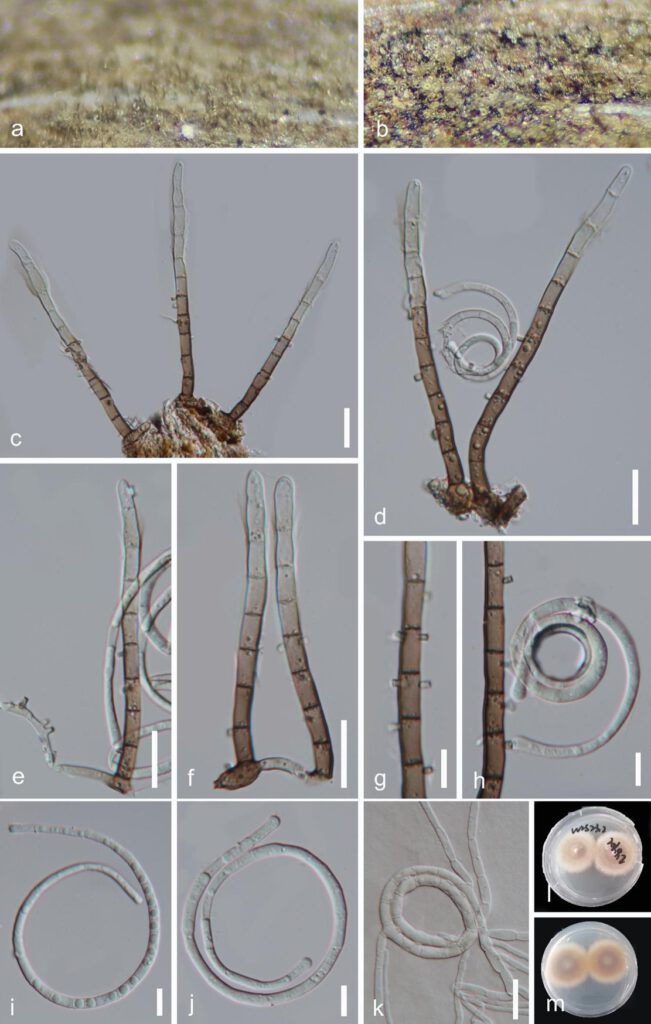Helicoma wuzhishanense Y.Z. Lu & J.C. Kang, sp. nov. Fig. 1
MycoBank number: MB; Index Fungorum number: IF; Facesoffungi number: FoF 13100;
Holotype: GZAAS 22-2003
Etymology: ‘wuzhishanense’ referring to collecting site.
Saprobic on decaying wood in a freshwater stream. Sexual morph Undetermined. Asexual morph Hyphomycetous, helicosporous. Colonies on the substratum superficial, effuse, gregarious, brown to dark brown. Mycelium partly immersed, brown, septate, branched hyphae, with masses of crowded glistening conidia. Conidiophores 90–130 µm long, 5.5–6.5 µm wide ( = 115 × 6 µm, n = 30), macronematous, mononematous, cylindrical, erect, straight to slightly bent, unbranched, septate, the lower part brown and the upper part pale brown, smooth-walled. Conidiogenous cells 10–13 × 5–6.5 µm ( = 11.5 × 5.5 µm, n = 20), holoblastic, mono- to polyblastic, integrated, intercalary, cylindrical, with denticles, arising laterally from the lower portion of conidiophores as tiny tooth-like protrusions (1.5–3 µm long, 1.5–2.5 µm wide), brown, smooth-walled. Conidia 34–58 µm diam., and conidial filament 2.5–5 µm wide ( = 45 × 4 µm, n = 20), 182–287 µm long, up to 34-septate, solitary, pleurogenous, helicoid, coiled 21/3–31/3 times, becoming loosely coiled in water, rounded at tip, guttulate, hyaline to pale brown, smooth-walled.

Figure 1. Helicoma wuzhishanense (GZAAS 22-2003, holotype). a, b Colony on decaying wood. c–f Conidiophores. g, h Conidiogenous cells with attached conidium. i, j Conidia. k Germinating conidium. l, m Colonies on PDA from above and below. Scale bars: c–f, k = 20 µm, g–j = 10 µm
